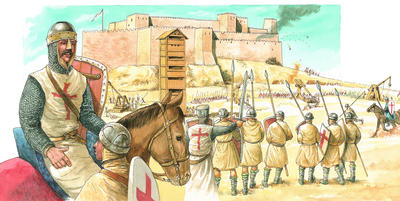|
|
 |
|
|
 |
|
What was a siege?
|
If an army was unable to take an enemy castle quickly by force, it might try to starve the people inside into surrendering. This was known as a siege. Because the risk of a siege was great in the Middle Ages, many castles had their own wells (for water) and plentiful stores of food so that they could hold out for a long time if necessary. If the siege failed, the attacking army might resort to force again. | | After unsuccessfully laying siege to a castle, this army is preparing to take it by force. |
|
| |
Previous:
Back
|
Book:
1001
|
Section:
History
|
Chapter:
The Middle Ages
|
|
|
|
 |
|
|




